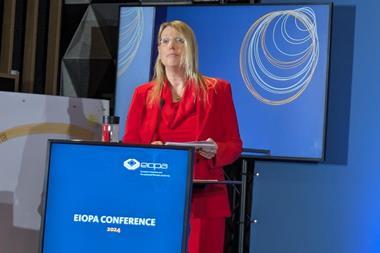TheDutch parliament has rejected proposed legislation to temporarily introduce a minimum discount rate for liabilities.
The bill – aimed at preventing unconditional cuts of pension rights in 2020 and 2021 – was tabled by Martin van Rooijen, MP for the political party for the elderly (50Plus).
The proposal provided for a minimum discount rate of 2% for a period of no longer than five years, to cushion the negative effect of the European Central Bank’s (ECB) quantitative easing policy on pension funds’ liabilities.
Pieter Omtzigt, MP for the Christian Democrats, said he acknowledged that the ECB’s policy posed a problem, but emphasised that a discount rate linked to market rates fitted the current pensions contract.
“Once we opt for adjusting the discount rate, we also need to abolish the market valuation of assets,” he argued.
The bill was also supported by socialist party SP and the Freedom Party (PVV). Rik Grashoff, MP for the SP, said that applying the risk-free market rate for the discount rate was not the only logical solution, and tabled a motion requesting a further evaluation of the financial assessment framework (FTK).
Van Rooijen said he was convinced that parties that didn’t support his bill would come up with another way of preventing rights cuts.
Employees have to wait for provider choice
Workers who want the option of transferring their pension rights to another provider will have to wait until a new pensions system has been introduced, social affairs minister Wouter Koolmees has indicated.
In a letter to parliament, he said that there were too many obstacles in the current system. Members of the Netherlands’ lower house had asked Koolmees to investigate the impediments for freedom of choice for the transfer of pension rights.
Although Koolmees recognised that transferring accrued pension rights to an alternative fund could be attractive, he mentioned risk selection as a potential problem.
In his opinion, the targeted advantage for the participant would cause disadvantages and costs for the other participants, which could undermine the principles of solidarity and collectivity.
He added that risks would differ by sector, and this could only be addressd by raising contributions for everybody.
According to the minister, costs would be a barrier for freedom of choice, citing the costs of quotes by both the desired and the current provider.
Koolmees also questioned whether employers would be pleased with these consequences.
Multi-pension fund HaskoningDHV to merge into single scheme
The €1.5bn multi-company scheme of Dutch consultancy group HaskoningDHV said it would merge its two compartments, as the funding gap had almost closed.
The model is very rare in the Netherlands, and was established in 2015 when the companies Royal Haskoning and DHV merged.
At the time, the coverage ratios of their respective pension funds were too different to fully merge without imposing benefit cuts.
With the recent introduction of the general pension fund (APF) in 2016 as an alternative consolidation model, multi-company schemes will no longer be possible in the future.
In a newsletter, the pension fund said the €900m DHV compartment had benefited from rising equity markets and higher interest rates, and that its funding had come very close to the 113% funding ratio of the Haskoning compartment.
If there was still a funding difference at the intended merger date of 30 June, pension rights of participants in the Haskoning compartment would be increased to equalise funding in both compartments, the scheme said.
It added that the remaining assets would be use for a one-off increase of the reinsured pension rights, as a compensation for a future lack of indexation.
As a benefit of the merger, the pension fund cited a uniform collective defined contribution plan for all employees as well as less complexity.
The collective value transfer as part of the change is subject to the approval of pensions watchdog DNB.
Pensions trade body leaks email addresses in privacy mail
The Dutch Pensions Federation accidentally added the mailing list for its news updates to an email about the EU’s new privacy legislation.
As a result, the email addresses of more than 1,300 recipients of its news emails were visible.
In its email, the industry organisation had asked the people on its mailing list to reconfirm their wish to keep on receiving the federation’s messages, in accordance with the EU’s General Data Protection Regulation, introduced last week.
“The list had accidentally been left as an attachment to the email,” explained Mandy Ros, spokeswoman for the Pensions Federation.
She said that the mistake had been noticed within a few minutes and that the message had been withdrawn immediately.
As a result, it was not entirely clear how many people had actually received the mailing list.
Ros said that the data leak had been reported to the local watchdog for data protection, and that the people on the mailing list had been sent an apology with the request to remove and destroy the attachment.







No comments yet